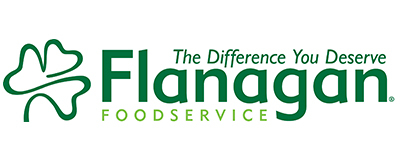
We collect basic website visitor information on this website and store it in cookies. We also utilize Google Analytics to track page view information to assist us in improving our website.
In an increasingly time-starved, drive-thru society, time really is of the essence—and perhaps especially so in tougher economic climates when many people are watching their pennies closely. But those same financially prudent folks are opting for quick dinner fixes and have discovered that restaurant-style meals can be taken home to eat. That can be quicker and less expensive for the customer, but it can also mean more money on a restaurant's bottom line.
According to the NPD Group, average diners in the United States order a take-away meal almost twice the amount of times as eating a meal at a restaurant. While Canadians have a different relationship with their restaurants, we can see similar forces at work here.
In some respects, the grocery store chains have led the charge. If you think about it, they offer a wide variety of prepared meals hot and ready to go when a customer pops in for a panini, a pizza, or a rotisserie chicken with a side of chunky potato wedges and slaw. And they can take those meals home for less money than visiting a restaurant.
So shouldn't full-service restaurants take advantage of this trend—the growing expectation by consumers that they can pop in and take-out? John Mitchell, a Flanagan territory manager, thinks so.
"I think that restaurants need to keep in mind that those meals are designed for people on the go and who don't have the time to sit down and eat a proper meal. The obvious way restaurants can take advantage is to offer similar meals-to-go."
Talk to busy families and you'll hear that they just don't have the time or energy to cook, but at the same time they may not feel like going out to a restaurant due to time or monetary restraints.
It's the profile of a changing diner. According to businessweek.com, in the United States take-out sales from restaurants—not merely traditional QSR establishments—is booming. Major casual-restaurant chains are taking orders via Internet, telephone, and even text messages. In fact, some U.S. Outback Steakhouse restaurants say that take-out meals account for nearly a third of all the meals their kitchen prepares.
Mitchell's experience working with a large grocery store chain tells him they know what take-away meals can mean to their bottom line: something in the order of five times the profit margin for selling the hot, prepared meal over selling the dish's ingredients off the shelves, he estimates.
"The chicken dinner and pizzas-to-go low-ball the average restaurant, partly because they don't have wait staff. And the start-up cost can be low. A hot take-out can be done in very little space."
For restaurants to jump in and take a piece of the growing grocery store take-out pie, Mitchell advises to start getting the word out. Build ready-to-go meals and people will come-if they know it's there.
"Promotion and advertising is important to reach those customers who are visiting grocery stores for ready-to-go meals. If possible, set up a take-out counter that's different than the main restaurant. Most restaurants are going to have food warmers and such equipment, and there may be set-up cost there, as well they will need proper take-out containers."

